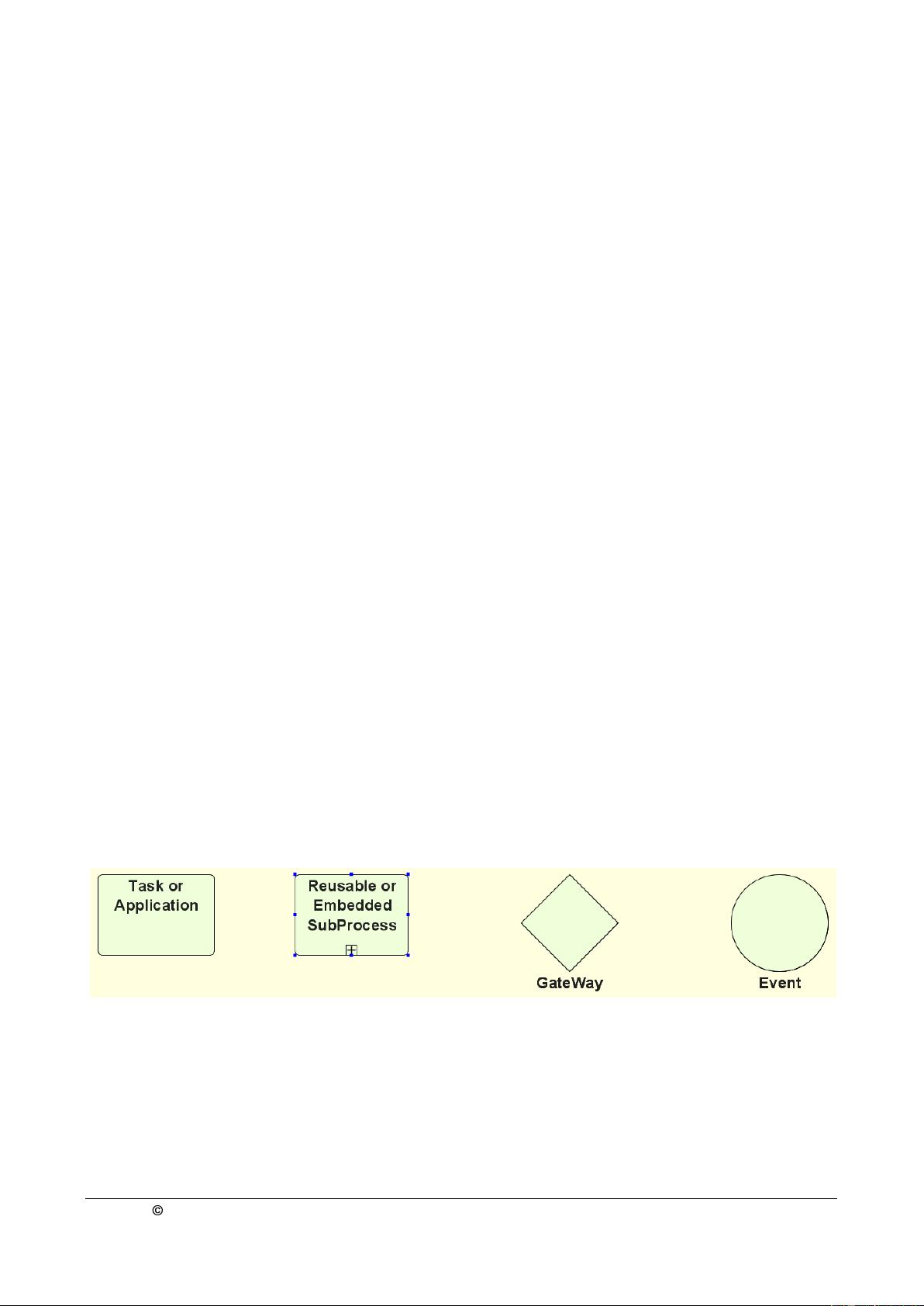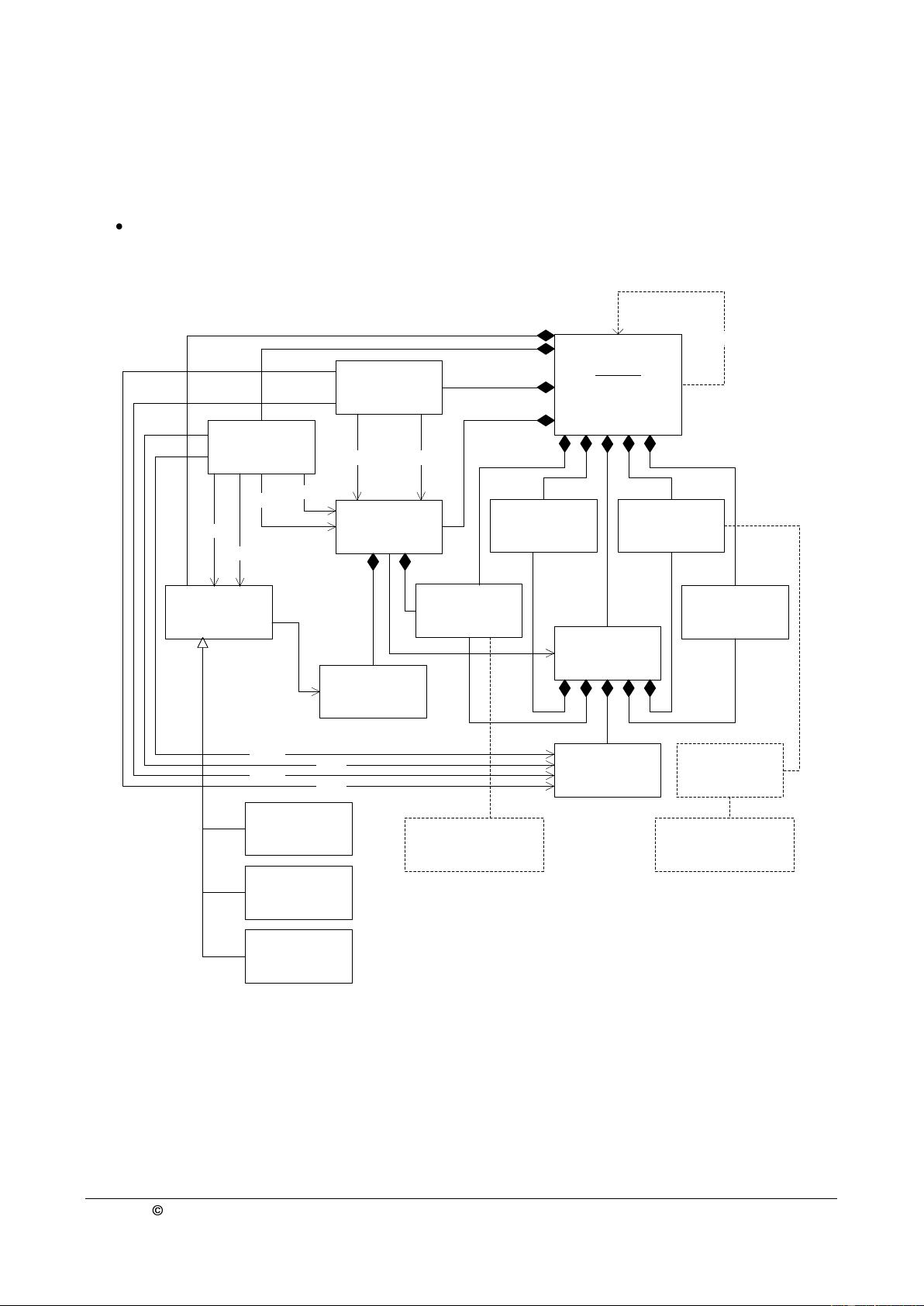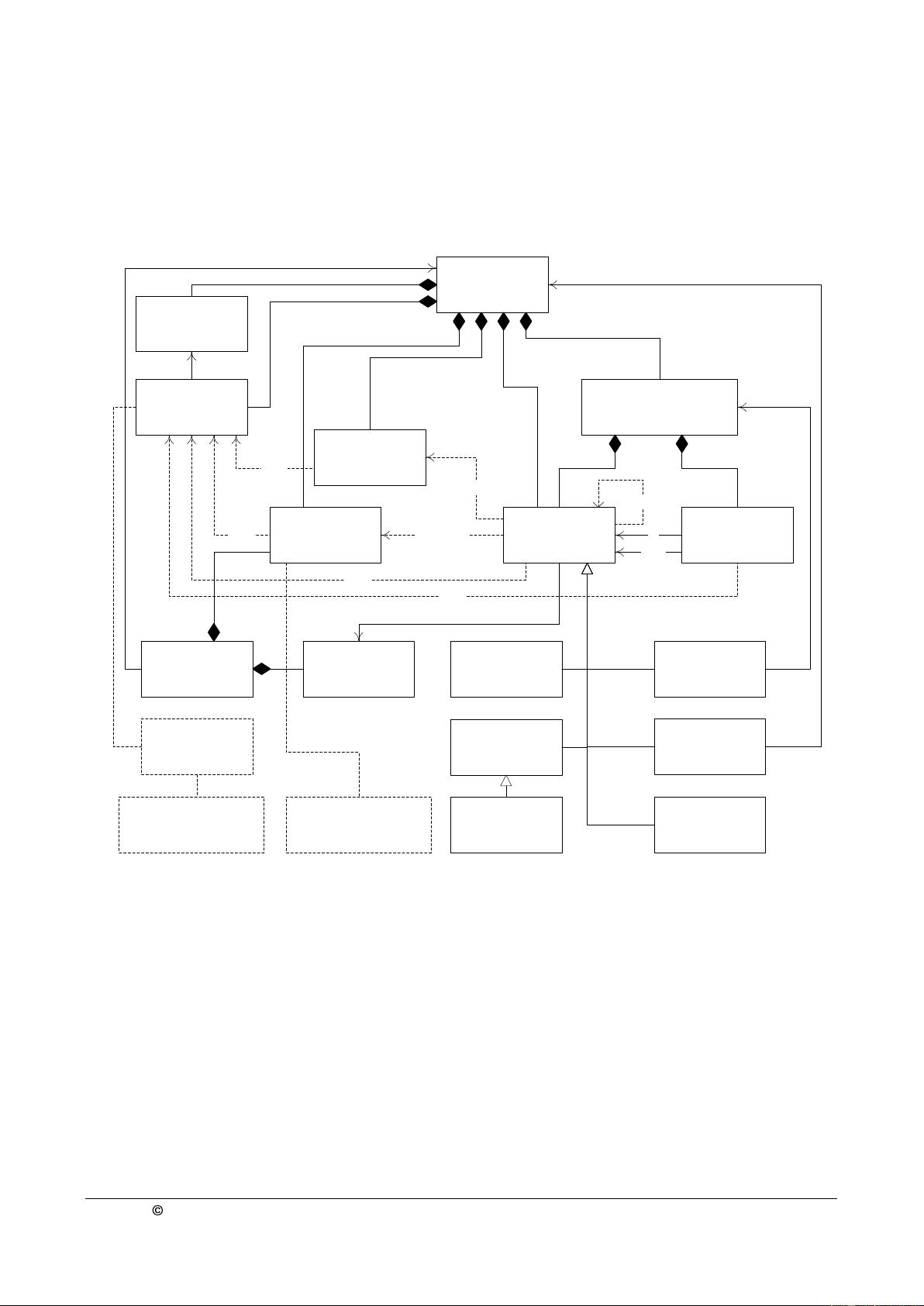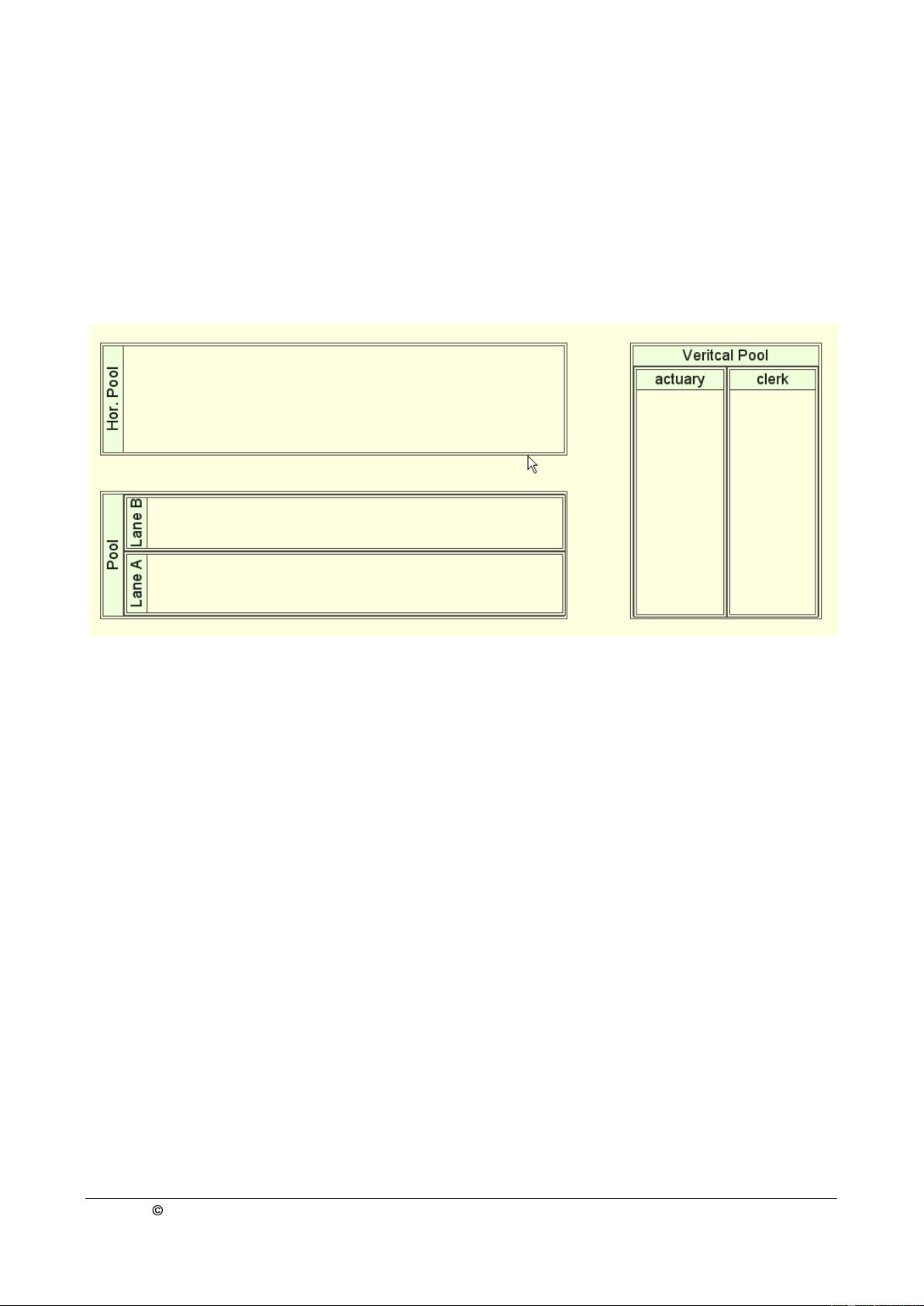
Workflow Management Coalition Process Definition 10 October 2008
Copyright 2008 The Workflow Management Coalition Page 18 of 217
container for the process itself and provides information associated with administration (creation date, author, etc.) or to
be used during process execution (initiation parameters to be used, execution priority, time limits to be checked, person
to be notified, simulation information, etc.). Note that a BPMN Business Process Diagram (BPD) contains multiple
processes.
6.4.3. Process Activity
An internal process consists of one or more activities, each comprising a logical, self-contained unit of work. In
addition, special activities, referred to as routing activities or Gateways, are used to implement decisions that affect the
Sequence Flow path through the process. Special activities, referred to as Events, affect when activities happen and
what routes are taken.
A typical activity represents work, which will be performed by a combination of resource (specified by performer
expressions) and/or computer applications (specified by application assignment). Other optional information may be
associated with the activity such as information on whether it is to be started / finished automatically by the process or
workflow management system or its priority relative to other activities where contention for resource or system services
occurs. Usage of specific relevant data field items by the activity may also be specified. The scope of an activity is local
to a specific process definition (although see the description of a subflow activity below).
Note that many of the details about activities are needed only in an execution environment. BPMN diagrams can be
drawn and interchanged between design tools without including these details.
In addition to Applications, an activity may be implemented as one of a number of built-in BPMN tasks. Their attribute
details are discussed in section 7.6.5.3. BPMN diagrams do not require the use of Applications.
An activity may be a subflow - in this case it is a container for the execution of a (separately specified) process
definition, which may be executed locally within the same service, or (possibly using the process interoperability
interface) on a remote service. The process definition identified within the subflow contains its own definition of
activities, internal transitions, resource, and application assignments (although these may be inherited from a common
source). In- and out-parameters permit the exchange of any necessary relevant data field between calling and called
process (and, where necessary, on return). Such definitions are equivalent to BPMN Reusable subprocesses.
An activity may be a block activity that executes an activity set, or map of activities and transitions. Activities and
transitions within an activity set share the name space of the containing process. An activity set is equivalent to a
BPMN embedded subprocess.
An activity may be a route activity, which performs no work processing (and therefore has no associated resource or
applications), but simply supports routing decisions among the incoming transitions and/or among the outgoing
transitions. BPMN gateways are represented by Route activities.
Finally, an activity may represent a BPMN event. An event is something that ―happens‖ during the course of a business
process. These events affect the flow of the process and usually have a cause (trigger) or an impact (result). There are
three types of Events, based on when they affect the flow: Start, Intermediate, and End. Their attribute details are
discussed in section 7.6.4.
BPMN provides a specific graphical representation for the different activities:
Figure 6.4: Activities
6.4.4. Transition Information
Activities are related to one another via flow control conditions (transition information). Each individual transition has
three elementary properties, the from-activity, the to-activity and the condition under which the transition is made.
Transition from one activity to another may be conditional (involving expressions which are evaluated to permit or
inhibit the transition) or unconditional. The transitions within a process may result in the sequential or parallel operation


















































